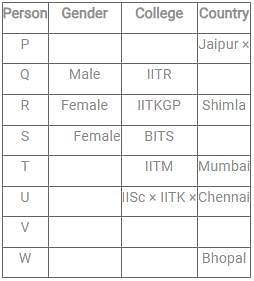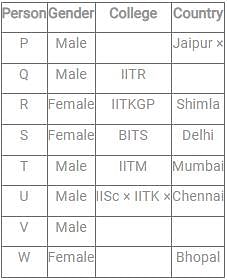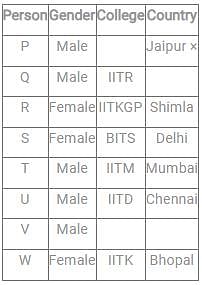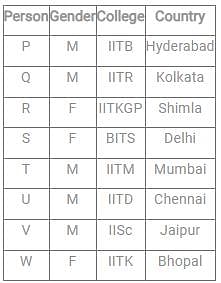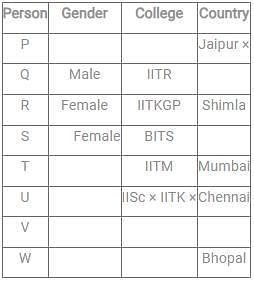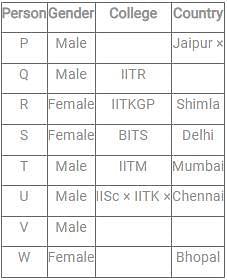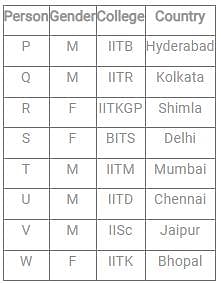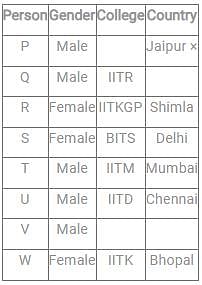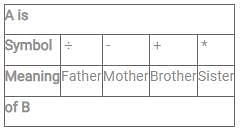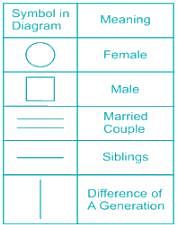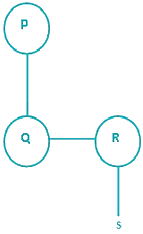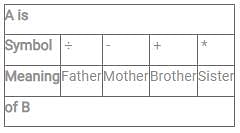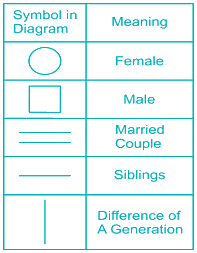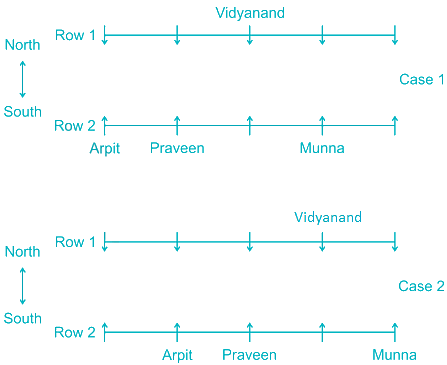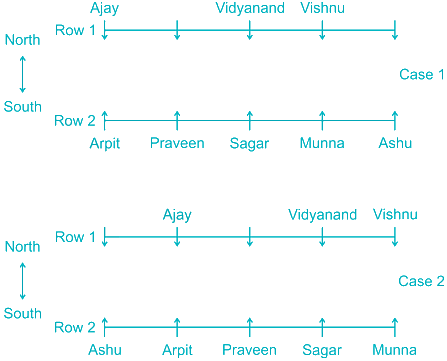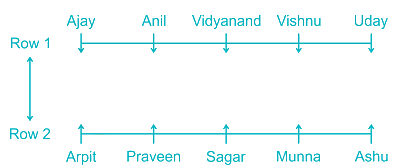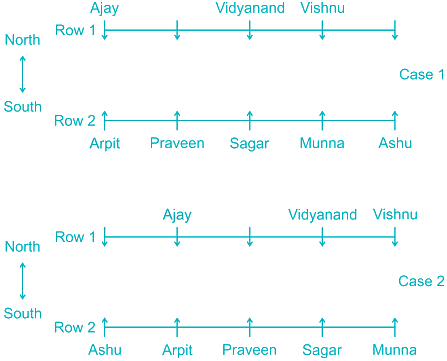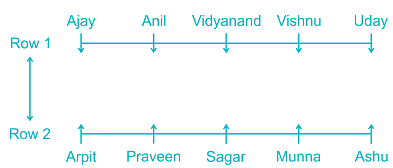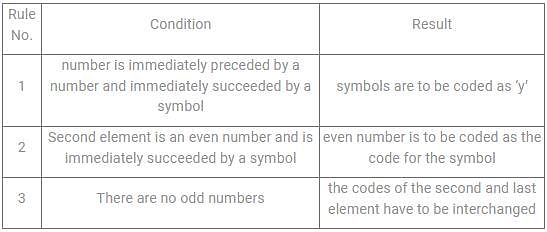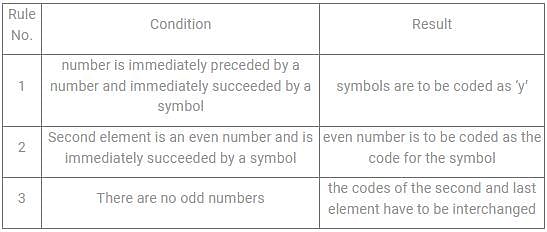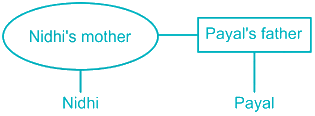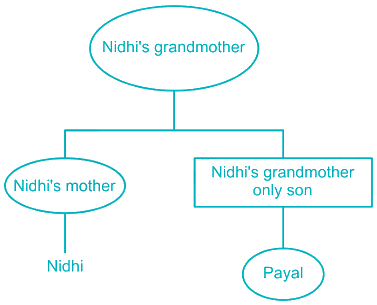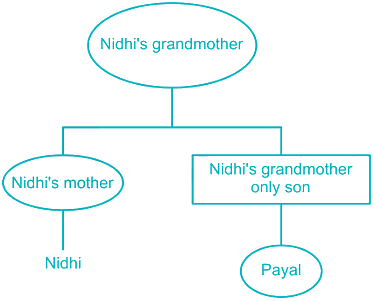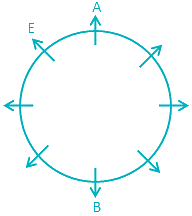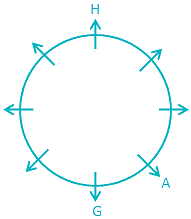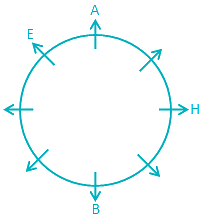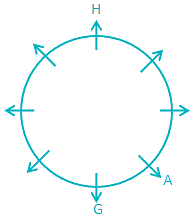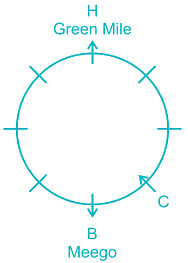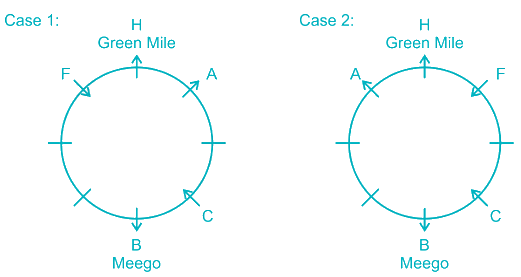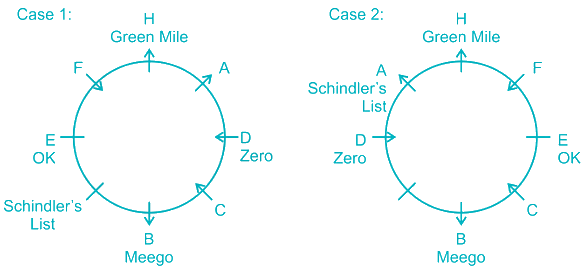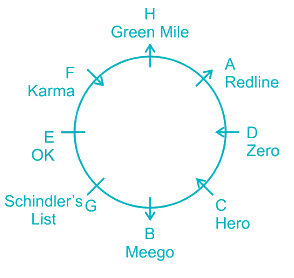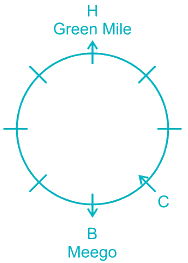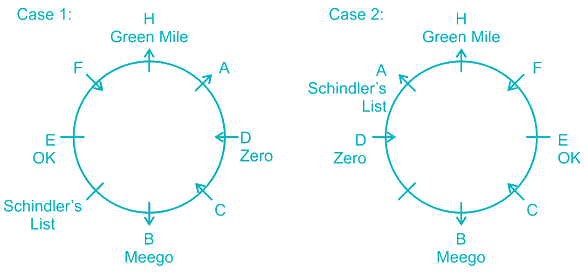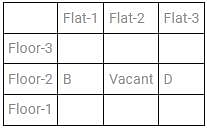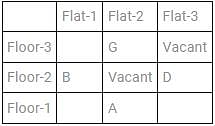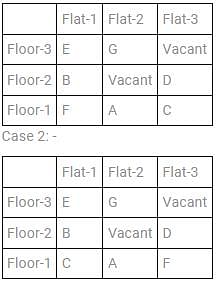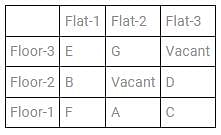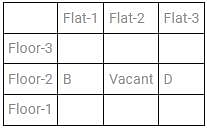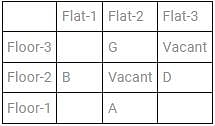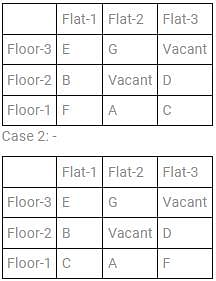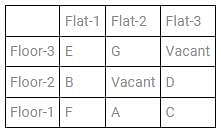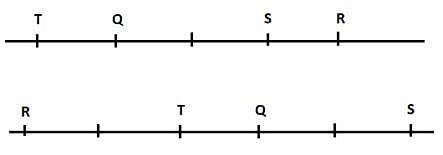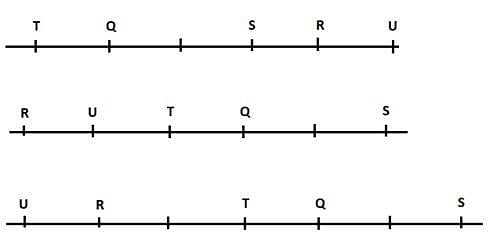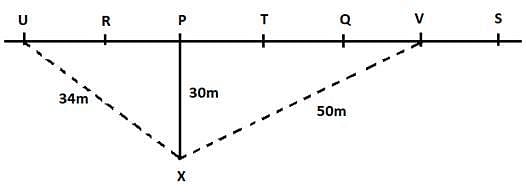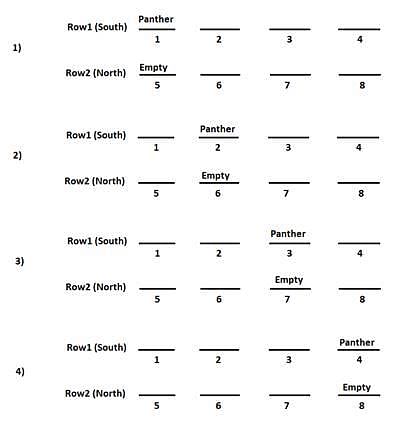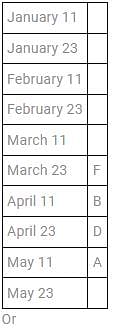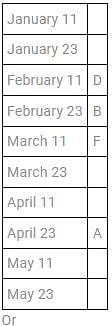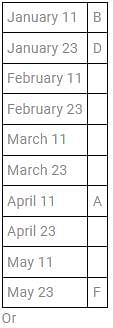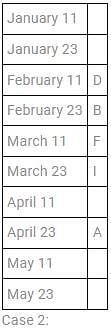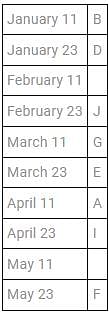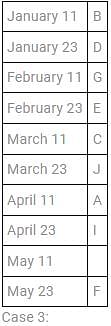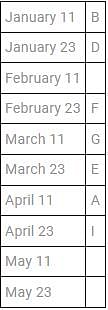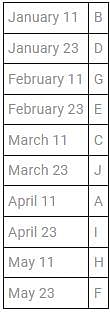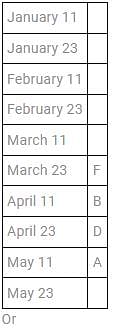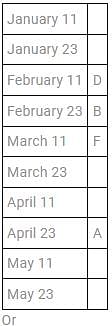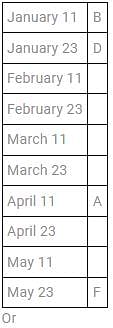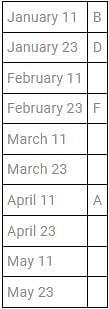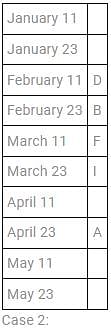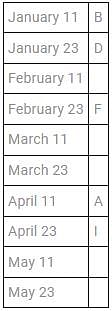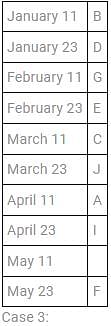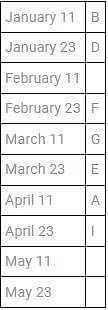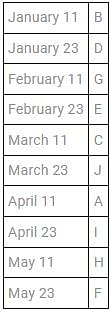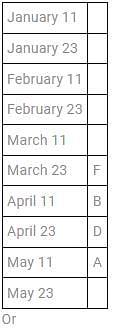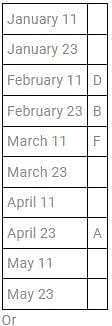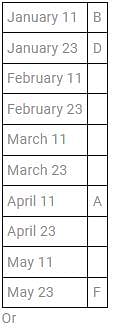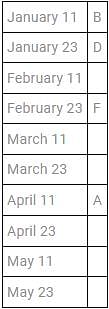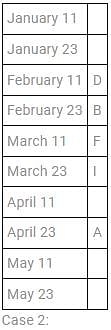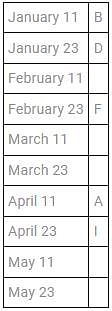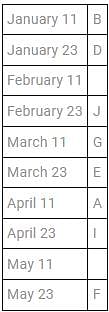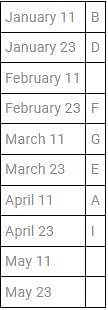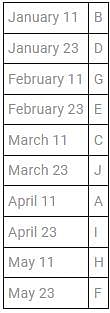EPFO Assistant Mains Mock Test - 3 - Bank Exams MCQ
30 Questions MCQ Test Mock Test Series for EPFO Assistant 2025 - EPFO Assistant Mains Mock Test - 3
Directions: Study the following information carefully and answer the questions follows:
There are eight persons – P, Q, R, S, T, U, V and W out of which 3 are females and rest males. They are studying in different engineering colleges - IITB, IITD, IITKGP, BITS, IITR, IITM, IISc and IITK and belong to different cities - Mumbai, Delhi, Shimla, Kolkata, Hyderabad, Chennai, Bhopal and Jaipur.
Q. T is from IITM and is from Mumbai. Q is from IITR and his sister R is from IITKGP and is from Shimla. S is from BITS and her friend is from IITB. U is from Chennai and is not from IISc and IITK. W is from Bhopal. P is not from Jaipur. No male belongs from Bhopal and Delhi. The one who belongs to Hyderabad is from IITB. The one who is from IITK is not from Jaipur nor Kolkata. The one who applied for IISc is neither from Kolkata nor Bhopal.
Who is S’s friend from IITB?
There are eight persons – P, Q, R, S, T, U, V and W out of which 3 are females and rest males. They are studying in different engineering colleges - IITB, IITD, IITKGP, BITS, IITR, IITM, IISc and IITK and belong to different cities - Mumbai, Delhi, Shimla, Kolkata, Hyderabad, Chennai, Bhopal and Jaipur.
Who is S’s friend from IITB?
Directions: Study the following information carefully and answer the questions follows:
There are eight persons – P, Q, R, S, T, U, V and W out of which 3 are females and rest males. They are studying in different engineering colleges - IITB, IITD, IITKGP, BITS, IITR, IITM, IISc and IITK and belong to different cities - Mumbai, Delhi, Shimla, Kolkata, Hyderabad, Chennai, Bhopal and Jaipur.
T is from IITM and is from Mumbai. Q is from IITR and his sister R is from IITKGP and is from Shimla. S is from BITS and her friend is from IITB. U is from Chennai and is not from IISc and IITK. W is from Bhopal. P is not from Jaipur. No male belongs from Bhopal and Delhi. The one who belongs to Hyderabad is from IITB. The one who is from IITK is not from Jaipur nor Kolkata. The one who applied for IISc is neither from Kolkata nor Bhopal.
Q. Which of the following statement is incorrect?
There are eight persons – P, Q, R, S, T, U, V and W out of which 3 are females and rest males. They are studying in different engineering colleges - IITB, IITD, IITKGP, BITS, IITR, IITM, IISc and IITK and belong to different cities - Mumbai, Delhi, Shimla, Kolkata, Hyderabad, Chennai, Bhopal and Jaipur.
T is from IITM and is from Mumbai. Q is from IITR and his sister R is from IITKGP and is from Shimla. S is from BITS and her friend is from IITB. U is from Chennai and is not from IISc and IITK. W is from Bhopal. P is not from Jaipur. No male belongs from Bhopal and Delhi. The one who belongs to Hyderabad is from IITB. The one who is from IITK is not from Jaipur nor Kolkata. The one who applied for IISc is neither from Kolkata nor Bhopal.
| 1 Crore+ students have signed up on EduRev. Have you? Download the App |
Directions: Study the following information carefully and answer the questions follows:
There are eight persons – P, Q, R, S, T, U, V and W out of which 3 are females and rest males. They are studying in different engineering colleges - IITB, IITD, IITKGP, BITS, IITR, IITM, IISc and IITK and belong to different cities - Mumbai, Delhi, Shimla, Kolkata, Hyderabad, Chennai, Bhopal and Jaipur.
T is from IITM and is from Mumbai. Q is from IITR and his sister R is from IITKGP and is from Shimla. S is from BITS and her friend is from IITB. U is from Chennai and is not from IISc and IITK. W is from Bhopal. P is not from Jaipur. No male belongs from Bhopal and Delhi. The one who belongs to Hyderabad is from IITB. The one who is from IITK is not from Jaipur nor Kolkata. The one who applied for IISc is neither from Kolkata nor Bhopal.
Q. Which of the following city is Q from?
There are eight persons – P, Q, R, S, T, U, V and W out of which 3 are females and rest males. They are studying in different engineering colleges - IITB, IITD, IITKGP, BITS, IITR, IITM, IISc and IITK and belong to different cities - Mumbai, Delhi, Shimla, Kolkata, Hyderabad, Chennai, Bhopal and Jaipur.
T is from IITM and is from Mumbai. Q is from IITR and his sister R is from IITKGP and is from Shimla. S is from BITS and her friend is from IITB. U is from Chennai and is not from IISc and IITK. W is from Bhopal. P is not from Jaipur. No male belongs from Bhopal and Delhi. The one who belongs to Hyderabad is from IITB. The one who is from IITK is not from Jaipur nor Kolkata. The one who applied for IISc is neither from Kolkata nor Bhopal.
Direction: Study the following information carefully and answer the given questions.
- C ÷ D means C is the father of D.
- C - D means C is the mother of D.
- C * D means C is the sister of D.
- C + D means C is the brother of D.
Q. In the given expression P – Q * R – S how Q is related to S?
Direction: Study the following information carefully and answer the given questions.
- C ÷ D means C is the father of D.
- C - D means C is the mother of D.
- C * D means C is the sister of D.
- C + D means C is the brother of D.
Q. In the given expression U ÷ V – W * D which is true?
Directions: Study the given information carefully and answer the given questions.
Ten people are sitting in two parallel rows having five people each in such a way that there is an equal distance between adjacent persons. In row – 1 Ajay, Vidyanand, Vishnu, Uday and Anil are seated (not necessarily in the same order) and all of them are facing south. In row-2 Praveen, Arpit, Sagar, Ashu and Munna are seated (not necessarily in the same order) and all of them are facing north. Therefore, in the given seating arrangement each member seated in a row faces another member of the other row.
Munna sits third to the right of Arpit. Praveen sits second to the left of Munna. The person facing Praveen sits on the immediate right of Vidyanand. Only one person sits between Vidyanand and Uday. Ajay is not an immediate neighbour of Vidyanand. Only two people sit between Ajay and Vishnu. Neither Vidyanand nor Ajay faces Ashu.
Q. Which of the following statements is True regarding Uday?
Directions: Study the given information carefully and answer the given questions.
Ten people are sitting in two parallel rows having five people each in such a way that there is an equal distance between adjacent persons. In row – 1 Ajay, Vidyanand, Vishnu, Uday and Anil are seated (not necessarily in the same order) and all of them are facing south. In row-2 Praveen, Arpit, Sagar, Ashu and Munna are seated (not necessarily in the same order) and all of them are facing north. Therefore, in the given seating arrangement each member seated in a row faces another member of the other row.
Munna sits third to the right of Arpit. Praveen sits second to the left of Munna. The person facing Praveen sits on the immediate right of Vidyanand. Only one person sits between Vidyanand and Uday. Ajay is not an immediate neighbour of Vidyanand. Only two people sit between Ajay and Vishnu. Neither Vidyanand nor Ajay faces Ashu.
Q. What is the position of Munna with respect to Ashu?
Directions: In the following question assuming the given statements to be true, find which of the conclusion(s) among given conclusions is / are definitely true and then give your answers accordingly.
Statements:
S = T ≤ C; G = C; A > P; G ≤ H = P
Conclusions:
I. C ≤ H
II. T > P
III. A > S
IV. G < S
Directions: In the following question assuming the given statements to be true, find which of the conclusion(s) among given conclusions is / are definitely true and then give your answers accordingly.
Statements:
X > Y; Y > N = D; D ≥ B = O; P < O
Conclusions:
I. Y ≤ P
II. X < D
III. O > D
IV. P < N
Directions: In each question below is given a group of numbers / symbols followed by five combinations of letter codes numbered (1), (2), (3), (4) and (5). You have to find out which of the combinations correctly represents the group of numbers / symbols based on the following coding system and the conditions and mark the number of that combination as your answer:

Conditions:
- If a number is immediately preceded by a number and immediately succeeded by a symbol, then all the symbols are to be coded as ‘y’.
- If the second element is an even number and is immediately succeeded by a symbol then that even number is to be coded as the code for the symbol.
- If there are no odd numbers then the codes of the second and last element have to be interchanged.
Q. If more than one conditions follow then the order of precedence will be in ascending order of the condition number.
How *0{7+65^1 will be coded?
Directions: In each question below is given a group of numbers / symbols followed by five combinations of letter codes numbered (1), (2), (3), (4) and (5). You have to find out which of the combinations correctly represents the group of numbers / symbols based on the following coding system and the conditions and mark the number of that combination as your answer:

Conditions:
- If a number is immediately preceded by a number and immediately succeeded by a symbol, then all the symbols are to be coded as ‘y’.
- If the second element is an even number and is immediately succeeded by a symbol then that even number is to be coded as the code for the symbol.
- If there are no odd numbers then the codes of the second and last element have to be interchanged.
Q. If more than one conditions follow then the order of precedence will be in ascending order of the condition number.
What will be code for 8)646+2 ?
Direction: The following question consists of two statements numbered I and II. Decide if data given in the statements are sufficient to answer the questions below.
How is Nidhi related to Payal's grandmother?
Statements:
I. Nidhi’s mother is sister of Payal’s father.
II. Payal is the daughter of Nidhi’s grandmother’s only son.
Direction: In the following question, a given question is followed by information in three statements. You have to find out the data in which statement(s) is sufficient to answer the question and mark your answer accordingly.
Eight members A, B, C, D, E, F, G and H are sitting around a circular table facing outward. Who sits third to the right of G?
I. A is to the immediate right of E, who is third to the right of B.
II. G is fourth to the right of H, who is third to the left of A.
III. H is not an immediate neighbor of G.
Directions: Study the following information carefully to answer the given questions.
8 people A, B, C, D, E, F, G, H sit around a circular table, some facing inward, some outward. Each like one of the movies Redline, Zero, Meego, Hero, OK, Schindler’s list, Karma, Green Mile. Further information is given.
C sits to the immediate left of B and faces inwards. H faces outward and likes Green Mile. E sits adjacent to F and likes OK. D likes Zero, faces inwards and sits opposite to person who likes OK. Person to 2nd right of F likes Schindler’s List. Person opposite to Hero liker likes Karma. The person to the left of D likes Hero. F, facing inwards and A, facing outwards sit adjacent to H. B, facing outwards, sits opposite to H and likes Meego.
Q. Which movie does G like?
Directions: Study the following information carefully to answer the given questions.
8 people A, B, C, D, E, F, G, H sit around a circular table, some facing inward, some outward. Each like one of the movies Redline, Zero, Meego, Hero, OK, Schindler’s list, Karma, Green Mile. Further information is given.
C sits to the immediate left of B and faces inwards. H faces outward and likes Green Mile. E sits adjacent to F and likes OK. D likes Zero, faces inwards and sits opposite to person who likes OK. Person to 2nd right of F likes Schindler’s List. Person opposite to Hero liker likes Karma. The person to the left of D likes Hero. F, facing inwards and A, facing outwards sit adjacent to H. B, facing outwards, sits opposite to H and likes Meego.
Q. Who sits to the right of E?
Directions: In the following questions, the Assertions (A) and Reason(s) (R) have been put forward. Read both the statements carefully and choose the correct alternative from the following.
Assertion (A): Frogs and toads go in a state of hibernation during winters.
Reason(R): In winter, trees lose their leaves and undergo dormancy.
Direction: The critical reasoning question is based on a short argument, a set of statements, or a plan of action. For each question, select the best answer of the given choices.
Q. Simran works at a law firm. Her boss assigns cases to all the employees. Simran believes that she can work better on the case assigned to her colleague, Myra. What should Simran do?
Directions: One statement is given, followed by two conclusions, I and II. You have to consider the statement to be true, even if it seems to be at variance from commonly known facts. You are to decide which of the given conclusions be definitely drawn from the given statement.
Statement: Vegetable prices are rising in the market.
Conclusions:
I. Vegetables aren’t eaten often.
II. Shop owners will benefit a lot from the price rise.
Directions: Study the following information carefully and answer the given questions:
A word and number arrangement machine when given an input line of words and numbers rearranges them following a particular rule in each step. The following is an illustration of input and rearrangement
- Input: soap 28 have 18 99 48 luck nice 78 ramp
- Step 1: have soap 28 18 48 luck nice 78 ramp 99
- Step 2: luck have soap 28 18 48 nice ramp 99 78
- Step 3: nice luck have soap 28 18 ramp 99 78 48
- Step 4: ramp nice luck have soap 18 99 78 48 28
- Step 5: soap ramp nice luck have 99 78 48 28 18
As per the rule followed in the above steps find out in each of following questions the appropriate steps for the input given below
Input: 48 late Zebra 15 82 Yak can vase 33 alt 87 54
Q. Which step number would be the following output?
vase late can alt Zebra 15 Yak 33 87 82 54 48
Directions: Study the following information carefully and answer the given questions:
A word and number arrangement machine when given an input line of words and numbers rearranges them following a particular rule in each step. The following is an illustration of input and rearrangement
- Input: soap 28 have 18 99 48 luck nice 78 ramp
- Step 1: have soap 28 18 48 luck nice 78 ramp 99
- Step 2: luck have soap 28 18 48 nice ramp 99 78
- Step 3: nice luck have soap 28 18 ramp 99 78 48
- Step 4: ramp nice luck have soap 18 99 78 48 28
- Step 5: soap ramp nice luck have 99 78 48 28 18
As per the rule followed in the above steps find out in each of following questions the appropriate steps for the input given below
Input: 48 late Zebra 15 82 Yak can vase 33 alt 87 54
Q. Which word/number is at 8th position in step 2 from left end?
Directions: 7 people A, B, C, D, E, F and G live in a 3-storey building. Each storey has 3 flats such that flat number 1 is to the left of flat number 2 and flat number 2 is to the left flat number 3. two flats are vacant.(consider directions as per your left and right)
- B lives in a flat, immediately left to the vacant flat.
- D lives on a second floor and in a flat 2nd to the right of flat in which B lives.
- For both the vacant flats, flat number is same as that of its floor number.
- G lives in the flat immediate left of vacant flat.
- Flat number of G is same as that of A.
- Flat numbers of C and E are different.
- Floor number of C and F are same.
Q. Vacant flat is ___
Directions: 7 people A, B, C, D, E, F and G live in a 3-storey building. Each storey has 3 flats such that flat number 1 is to the left of flat number 2 and flat number 2 is to the left flat number 3. two flats are vacant.(consider directions as per your left and right)
- B lives in a flat, immediately left to the vacant flat.
- D lives on a second floor and in a flat 2nd to the right of flat in which B lives.
- For both the vacant flats, flat number is same as that of its floor number.
- G lives in the flat immediate left of vacant flat.
- Flat number of G is same as that of A.
- Flat numbers of C and E are different.
- Floor number of C and F are same.
Q. Sum of flat number and floor number is maximum for ___.
Directions: Seven persons P, Q, R, S, T, U and V were standing in a row facing the north.
- Q was to the immediate right of T and was 2nd to the left of S
- Q and R were seated at a gap of 2
- R was neighbouring U
- S was not standing neighbouring P and P was not at either of the extreme ends.
- P travelled for 30m towards the South and stopped at point X such that the shortest distance between him and U became 34m and also the shortest distance between him and V became 50m
Q. What was the initial distance between U and V?
Directions Seven persons P, Q, R, S, T, U and V were standing in a row facing the north.
- Q was to the immediate right of T and was 2nd to the left of S
- Q and R were seated at a gap of 2
- R was neighbouring U
- S was not standing neighbouring P and P was not at either of the extreme ends.
- P travelled for 30m towards the South and stopped at point X such that the shortest distance between him and U became 34m and also the shortest distance between him and V became 50m
Q. How many persons were to the right of S?
Directions Seven persons P, Q, R, S, T, U and V were standing in a row facing the north.
- Q was to the immediate right of T and was 2nd to the left of S
- Q and R were seated at a gap of 2
- R was neighbouring U
- S was not standing neighbouring P and P was not at either of the extreme ends.
- P travelled for 30m towards the South and stopped at point X such that the shortest distance between him and U became 34m and also the shortest distance between him and V became 50m
Q. Who among the following was exactly in the middle of the row?
Directions: There were eight cages in a zoo which were numbered 1-8. They were arranged in 2 rows such that row 1 had 4 cages numbered 1-4 facing the south and row 2 had 4 cages numbered 5-8 facing the north.(Cage 1 is facing cage 5 which is the leftmost cage in the row facing north ) Thus, cage 1 was opposite to cage 5 and so on. Out of the 8 cages, 7 cages had different animals monkey, lion, tiger, panther, leopard, bear and elephant. One of the cage was empty.
- Panther's cage was opposite to the empty cage which faced North
- Tiger's cage was 2nd to the left of the elephant's cage
- Elephant was opposite to the lion's neighbour
- Monkey was in an even numbered cage
- Sum of the cage numbers of monkey and leopard was equal to the cage number of tiger
- Elephant was not opposite to the monkey's cage
Q. ______ was in cage number _____
Directions: There were eight cages in a zoo which were numbered 1-8. They were arranged in 2 rows such that row 1 had 4 cages numbered 1-4 facing the south and row 2 had 4 cages numbered 5-8 facing the north.(Cage 1 is facing cage 5 which is the leftmost cage in the row facing north ) Thus, cage 1 was opposite to cage 5 and so on. Out of the 8 cages, 7 cages had different animals monkey, lion, tiger, panther, leopard, bear and elephant. One of the cage was empty.
- Panther's cage was opposite to the empty cage which faced North
- Tiger's cage was 2nd to the left of the elephant's cage
- Elephant was opposite to the lion's neighbour
- Monkey was in an even numbered cage
- Sum of the cage numbers of monkey and leopard was equal to the cage number of tiger
- Elephant was not opposite to the monkey's cage
Q. Four of the following bear a similar relationship and hence form a group, who among the following is not a part of that group?
Directions: A block was divided into 10 villages A, B, C, D, E, F, G, H, I and J. These villages were electrified one by one not necessarily in the same order. The electrification took place in the months of January, February, March, April and May on either 11th or 23rd of these months. No 2 villages were electrified on the same day. The electrification took place in the same year.
- Number of villages electrified after village B was thrice as that the number of villages that were electrified after village A. B was not electrified the last
- A and F were electrified at a gap of 2 villages
- Number of villages electrified after village I was twice as that of the number of villages electrified before D
- B and D were electrified consecutively
- G was electrified just before E but neither of them was the last or the first to be electrified
- J was electrified on 23rd
- C was electrified in March
Q. Which of the following village was electrified the 2nd last?
Directions: A block was divided into 10 villages A, B, C, D, E, F, G, H, I and J. These villages were electrified one by one not necessarily in the same order. The electrification took place in the months of January, February, March, April and May on either 11th or 23rd of these months. No 2 villages were electrified on the same day. The electrification took place in the same year.
- Number of villages electrified after village B was thrice as that the number of villages that were electrified after village A. B was not electrified the last
- A and F were electrified at a gap of 2 villages
- Number of villages electrified after village I was twice as that of the number of villages electrified before D
- B and D were electrified consecutively
- G was electrified just before E but neither of them was the last or the first to be electrified
- J was electrified on 23rd
- C was electrified in March
Q. How many villages were electrified between village F and H?
Directions: A block was divided into 10 villages A, B, C, D, E, F, G, H, I and J. These villages were electrified one by one not necessarily in the same order. The electrification took place in the months of January, February, March, April and May on either 11th or 23rd of these months. No 2 villages were electrified on the same day. The electrification took place in the same year.
- Number of villages electrified after village B was thrice as that the number of villages that were electrified after village A. B was not electrified the last
- A and F were electrified at a gap of 2 villages
- Number of villages electrified after village I was twice as that of the number of villages electrified before D
- B and D were electrified consecutively
- G was electrified just before E but neither of them was the last or the first to be electrified
- J was electrified on 23rd
- C was electrified in March
Q. When was village E electrified?


